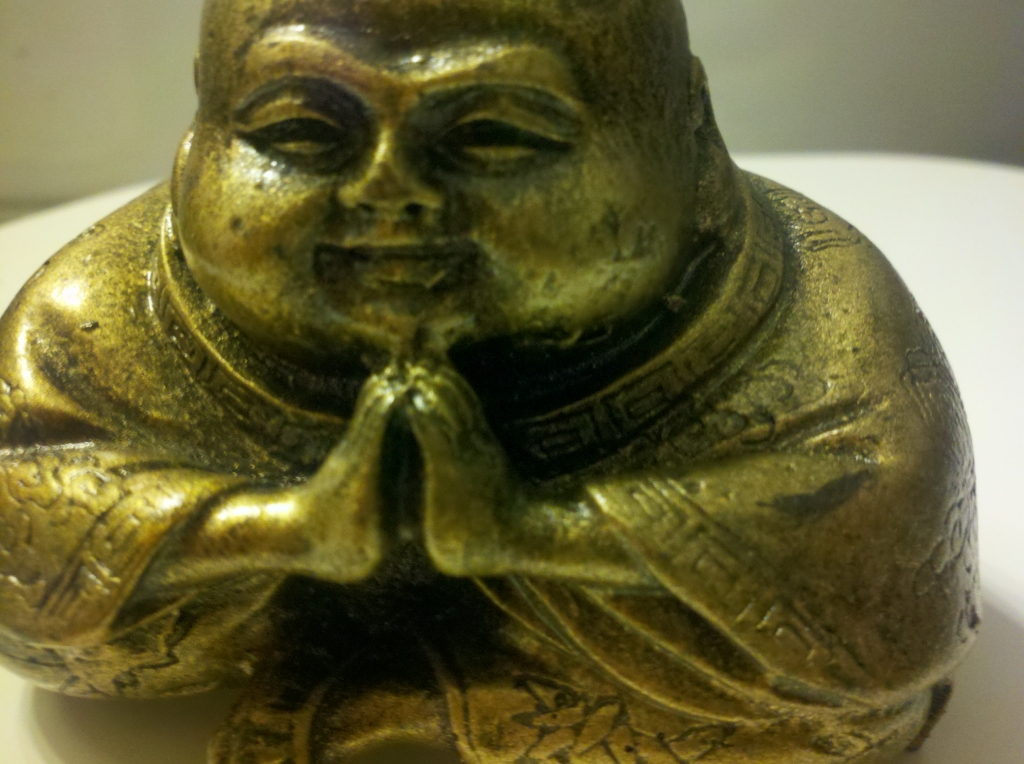Curious about meditation? How and why to start a practice.
“The flowering of love is meditation.” – Jiddu Krishnamurti
I’m feeling a little shy to say this, but I meditate. It started after a bad breakup; I was a bit of a hot mess and was grasping at anything to relieve the pain. Stuck on an emotional merry-go-round in my head, I couldn’t stop obsessing about where things went wrong.
A friend saw how much pain I was in and suggested I try meditation as a way to ground myself. I wish I could say I felt instant relief, but I was so stuck that I felt like a caged animal. My thoughts were relentless. You know what I’m talking about: that constant ferris wheel of pain we ride on when we’re hurt? Yeah. It’s an endless route of not being able to let go.
Desperate for change, I stuck with it. I thought, surely all those meditators can’t be crazy. And then a few sessions in, something clicked–It felt like I was giving myself permission to stop obsessing.
It felt like meditation was my much needed, self-imposed time out. I was finally loving ME and practicing compassion towards myself.
I love this video of Russell Simmons breaking it down:
I wish I could say I am a strict practitioner and regularly experience awakenings (I’m not and I don’t). But I do always come back to it; I keep trying because it gives me something that no form of exercise or activity has ever given me: no place to go but in.
And when you go in, you can be who you really are.
Over the years, my practice has had an ebb and flow. Right now I’m in a 3-4 days a week cycle of sitting for 5 minutes. (Yes! Only 5 minutes and even that can be hard to fit in some days. I have gotten up to 20 minutes so I know I can get there again.)
There are many different types of meditation and mindfulness resources, but here is a basic way to get started:
- Set a timer for 5 minutes. You can increase it as you become more comfortable with sitting each time, or stay at 5 minutes! No pressure.
- Sit somewhere you won’t be disturbed in whatever position that is comfortable to you, place your hands gently in your lap and close your eyes (just try to avoid lying down– that will encourage you to fall asleep).
- Focus on your breathing—hear your breath go in and out of your nose.
- When you notice a thought come up (it will), just acknowledge it and let it go. That’s totally normal! Just let go of how you think it should feel and listen to the sound of your breath. Almost see it like a cloud floating by and let it pass.
- Voila! You just meditated!
Just trying it is part of the practice. There are thousands of thoughts running through our minds everyday. Sometimes the inner chatter alone can be exhausting. Other times we are totally oblivious to our thoughts (are you listening to me subconscious?) Either way, it’s usually the mind controlling us, not us controlling the mind. Meditation can change that.
There is no magic formula, just sit and be quiet. Try to be consistent and schedule it in your day. When you sit, the same thoughts may keep coming up–that’s called monkey brain and it happens to everyone. Just keep practicing and be gentle with yourself.
Quick Facts:
- Meditation is actually the act of trying to meditate.
- Meditation improves memory function and helps to identify habitual thoughts that can be self-defeating. (I felt a pang of relief when I realized that.)
- Mediation can actually change the structure of your brain (for the better).
- You may never feel like you are ‘great at it’; that’s why they call it a practice.
Treat every moment as your last. It is not preparation for something else. ― Shunryu Suzuki, Zen Mind, Beginner’s Mind

